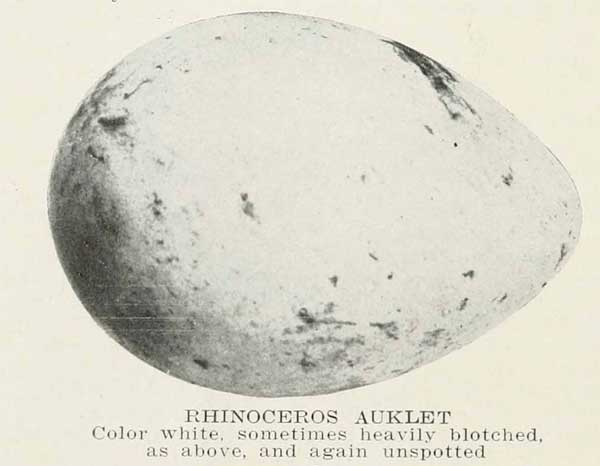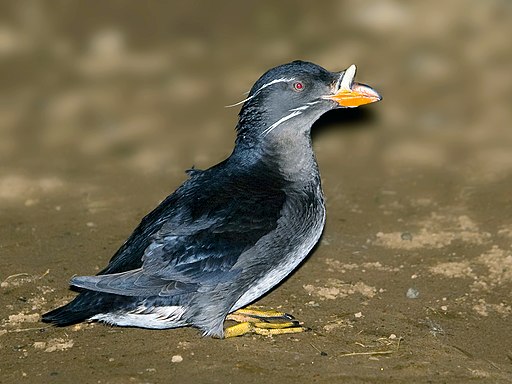Superregnum: Eukaryota
Cladus: Unikonta
Cladus: Opisthokonta
Cladus: Holozoa
Regnum: Animalia
Subregnum: Eumetazoa
Cladus: Bilateria
Cladus: Nephrozoa
Superphylum: Deuterostomia
Phylum: Chordata
Subphylum: Vertebrata
Infraphylum: Gnathostomata
Megaclassis: Osteichthyes
Cladus: Sarcopterygii
Cladus: Rhipidistia
Cladus: Tetrapodomorpha
Cladus: Eotetrapodiformes
Cladus: Elpistostegalia
Superclassis: Tetrapoda
Cladus: Reptiliomorpha
Cladus: Amniota
Classis: Reptilia
Cladus: Eureptilia
Cladus: Romeriida
Subclassis: Diapsida
Cladus: Sauria
Infraclassis: Archosauromorpha
Cladus: Crurotarsi
Divisio: Archosauria
Cladus: Avemetatarsalia
Cladus: Ornithodira
Subtaxon: Dinosauromorpha
Cladus: Dinosauriformes
Cladus: Dracohors
Cladus: Dinosauria
Ordo: Saurischia
Cladus: Eusaurischia
Subordo: Theropoda
Cladus: Neotheropoda
Cladus: Averostra
Cladus: Tetanurae
Cladus: Avetheropoda
Cladus: Coelurosauria
Cladus: Tyrannoraptora
Cladus: Maniraptoromorpha
Cladus: Maniraptoriformes
Cladus: Maniraptora
Cladus: Pennaraptora
Cladus: Paraves
Cladus: Eumaniraptora
Cladus: Avialae
Infraclassis: Aves
Cladus: Euavialae
Cladus: Avebrevicauda
Cladus: Pygostylia
Cladus: Ornithothoraces
Cladus: Ornithuromorpha
Cladus: Carinatae
Parvclassis: Neornithes
Cohors: Neognathae
Cladus: Neoaves
Ordo: Charadriiformes
Subordo: Alcae
Familia: Alcidae
Genus: Cerorhinca
Species: Cerorhinca monocerata
Name
Cerorhinca monocerata (Pallas, 1811)
Synonymy
Alca monocerata (protonym)

Cerorhinca monocerata egg
References
Zoographia Rosso-Asiatica 2: 362
Vernacular names
български: Носорогова кайра
brezhoneg: Godog beg kornek
català: Fraret rinoceront
čeština: Papuchalk růžkatý
Cymraeg: Carfil rhyncorniog
Deutsch: Nashornalk
English: Rhinoceros Auklet
Esperanto: Rinocera Aŭko
español: Alca unicórnea
فارسی: ماهیگیرک شاخبینی
français: Macareux rhinocéros
עברית: אלקית קרנפית
magyar: Orrszarvú alka
italiano: Alca minore rinoceronte
日本語: ウトウ
Nederlands: Neushoornalk
norsk: Neshornlunde
polski: Nurek
پنجابی: گینڈا اوک
русский: Тупик-носорог
svenska: Hornalka
Türkçe: Gergedan dalıcımartı
українська: Тупик-носоріг
中文: 角嘴海雀
The rhinoceros auklet (Cerorhinca monocerata) is a seabird and a close relative of the puffins. It is the only extant species of the genus Cerorhinca. Given its close relationship with the puffins, the common name rhinoceros puffin has been proposed for the species.[2]
It ranges widely across the North Pacific, feeding on small fish and nesting in colonies. Its name is derived from a horn-like extension of the beak (the anatomic term for this extension is the rhamphotheca). This horn is only present in breeding adults, and like the elaborate sheath on the bill of puffins is shed every year. This horn also processes fluorescent properties, which is likely involved in reproductive signalling.[3]
The rhinoceros auklet (also known as the rhino auklet, horn-billed puffin, or unicorn puffin), is a medium-sized auk with a large, strong, orange/brown bill (with the 'horn' protruding from it). The plumage is dark on top and paler below; breeding adults (both male and female) possess white plumes above the eyes and behind the bill. Males are slightly larger than females (about 10% in mass).[citation needed]
Distribution
The rhinoceros auklet is a North Pacific auk that breeds from California (the Channel Islands) to the Aleutian Islands in Alaska in North America; and Hokkaidō and Honshū, Japan, as well as the Korean Peninsula and Sakhalin Island in Asia. It winters both in offshore and inshore waters, exhibiting some migration. Between October and April, migration of a large number occurs on pelagic California waters, most coming from breeding colonies north of California. Auks that reside off the California coast remain in their areas.[4]
Breeding
Breeding occurs in the early summer months, ranging from May to June. The auklet nests in burrows dug into the soil, or in natural caves and cavities between 1 and 5 m deep. It prefers nesting sites on slight inclines to aid take-off, as it is a poor flier. A single egg is incubated by both parents for 30–35 days. The semiprecocial chick is then fed each night with a bill full of fish (in the manner of puffins) for 35–45 days. This nocturnal behaviour is believed to be a response to predation and kleptoparasitism by gulls.[4][5]
Rhinoceros Auklets are monogamous, and although they migrate across similar areas during the non-breeding season, pair-mates migrate separately. However, they do synchronize their foraging activity once they return to the colony during the pre-laying period.[6]
Feeding
At sea, rhinoceros auklets feed on fish, with some krill and squid taken also. They feed inshore during the breeding season in the midwater. To catch their prey, they dive as deep as 57 meters (187 ft) for as long as 148 seconds.[7]
Diet studies of nesting rhinoceros auklets show that their diet is variable depending on the location of the bird's nest. At one island located near the Salish Sea off of the Washington coast, auklets feed mainly on sand lance, while at a separate island also off of the Washington coast, auklets feed on anchovy and smelt.[8]
Evolution and prehistoric species
The genus Cerorhinca evolved in the North Pacific, apparently in the mid-late Miocene. Although today only one species remains, it used to be much more diverse, both in number of species and in distribution. Fossils have been found as far south as Baja California. The first record of the clade from the Atlantic Ocean was reported by Smith et al. (2007) and suggests that the biogeographic history of Cerorhinca is more complex than previously thought.[9] Known prehistoric species are:
Dubious auklet, Cerorhinca dubia L. H. Miller, 1925 (Late Miocene of San Barbara County, USA)
Cerorhinca minor Howard, 1971 (Late Miocene/Early Pliocene of Cedros Island, Mexico)
Cerorhinca reai Chandler, 1990 (San Diego Late Pliocene, North American Southwest)
Cerorhinca aurorensis N. A. Smith, 2011, a nomen nudum, only published in a PhD dissertation[citation needed] (Yorktown Formation Late Pliocene, North Carolina, USA)
Cerorhinca sp. (Early Pliocene, Southeastern Woodlands)
Bill fluorescence
Since rhinoceros auklets are monogamous and highly social, the species depend heavily on physical characteristics of the other species in order to choose a lifetime mate.[10] The prominent horn on the bill of breeding rhinoceros auklet is one evolutionary byproduct of this behavior. Also, the bill interestingly has fluorescent characteristics when viewed under ultraviolet light. Several bird species are able to detect cues through UV light,[11] which supports the claim that this fluorescence is also meant for breeding purposes. While the upper and lower mandible give off fluorescence as well, this phenomenon is most prominent in the horn. There is no evidence for disparity of fluorescence between sexes, however, the amount of fluorescence does vary between individual auks.[3]
References
BirdLife International (2018). "Cerorhinca monocerata". IUCN Red List of Threatened Species. 2018: e.T22694924A131933971. doi:10.2305/IUCN.UK.2018-2.RLTS.T22694924A131933971.en. Retrieved 12 November 2021.
AOU. (2008) AOU Committee on Classification and Nomenclature (North & Middle America) Proposals 2008-A Accessed 28 May 2008.
Wilkinson, B.P.; Johns, M.E.; Warzybok, P. (2019). "Fluorescent ornamentation in the Rhinoceros Auklet Cerorhinca monocerata". Ibis. 161 (3): 694–698. doi:10.1111/ibi.12715.
Sowls, A. L., A. R. DeGange, J. W. Nelson, and G. S. Lester. 1980. Catalog of California seabird colonies. U.S. Dep. Inter., Fish and Wildl. Serv., Wash. DC. Biol. Serv. Program FWS/OBS-80/37. 371pp.
Scott, J. M., W. Hoffman, D. Ainley, and C. F. Zeillemaker. 1974. Range expansion and activity patterns in rhinoceros auklets. West. Birds 5:13-20.
Kubo, A.; Takahashi, A.; Thiebot, J.; Watanuki, Y. (2018). "Rhinoceros Auklet pair‐mates migrate independently but synchronize their foraging activity during the pre‐laying period". Ibis. 160 (4): 832–845. doi:10.1111/ibi.12583.
Kuroki, Maki; Kato, Akiko; Watanuki, Yutaka; Niizuma, Yasuaki; Takahashi, Akinori; Naito, Yasuhiko (July 2003). "Diving behavior of an epipelagically feeding alcid, the Rhinoceros Auklet (Cerorhinca monocerata)". Canadian Journal of Zoology. 81 (7): 1249–1256. doi:10.1139/z03-112.
"Nights in the lives of the rhinoceros auklets of Protection Island | Encyclopedia of Puget Sound". www.eopugetsound.org. Retrieved 20 November 2020.
Smith, N.A.; Olson, S.L.; Clarke, J.A. (2007). "First Atlantic record of the puffin Cerorhinca (Aves, Alcidae) from the Pliocene of North Carolina" (PDF). Journal of Vertebrate Paleontology. 27 (4): 1039–1042. doi:10.1671/0272-4634(2007)27[1039:farotp]2.0.co;2.
Seneviratne, S.S. & Jones, I.L. 2008. Mechanosensory function for facial ornamentation in the Whiskered Auklet, a crevice‐dwelling seabird. Behav. Ecol. 19: 784–790.
Chen, D.M., Collins, J.S. & Goldsmith, T.H. 1984. The ultraviolet receptor of bird retinas. Science 225: 337–340.
Gaston, A.J.; Dechesne, S.B.C. (1996). "Rhinoceros Auklet (Cerorhinca monocerata)". In Poole, A.; Gill, F. (eds.). The Birds of North America, No. 212. Philadelphia, PA and Washington, DC: Academy of Natural Sciences and American Ornithologists' Union.
Retrieved from "http://en.wikipedia.org/"
All text is available under the terms of the GNU Free Documentation License


